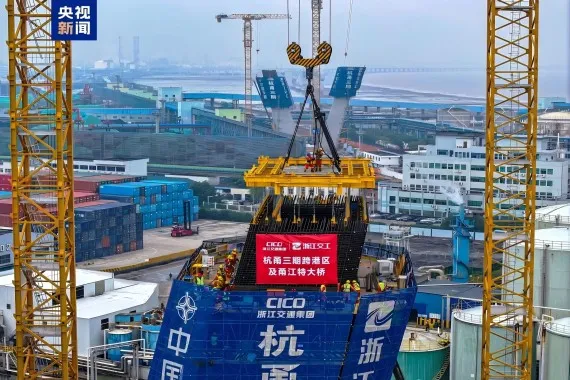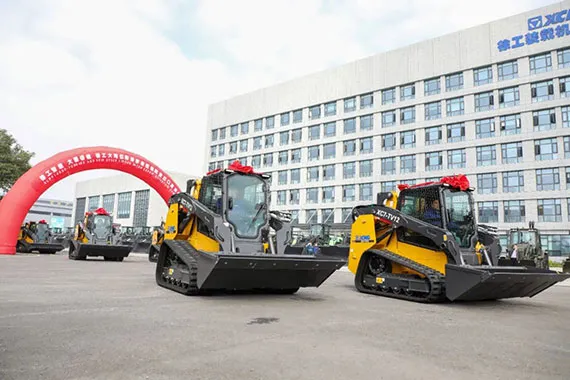Construction Pros Make Predictions for How Tech Will Affect Their Business
As we look ahead into 2023, construction
projects are still moving at a brisk pace yet higher interest rates and talk of
a recession are top of mind for many in our industry.
Meanwhile, more recent findings on growth
in construction spending show some early signs of slowing yet are expected to
continue to grow over the next six months. As the construction industry remains
at an interesting inflection point, we asked several leaders at construction
and engineering firms for their predictions on what the new year will bring in
terms of rapidly advancing technology and its effects on productivity and
safety on the job site. Here’s what they had to say:
What issues are you most concerned about in
2023?
“Staffing and
training new personnel to handle the forecasted workload. It takes time to hire
and train new people on our processes and operating software systems. The key
is to utilize the most user-friendly and intuitive apps and programs to
facilitate more streamlined training programs.” - Zach Hoffman, director of
field operations at Prevost Construction, Carlsbad, CA.
“Profitability
for general contractors. In 2023, commercial development projects will
continue, yet profitability will remain flat due to rising prices, labor
shortages and supply chain challenges.” - David Ward, CEO, Safe Site Check In.
“The
construction labor shortage – it means the days are longer, projects take
longer, and there’s the likelihood of more accidents.” - Crissy Ingram,
executive director, National Association of Women in Construction (NAWIC).
“There’s a
slowdown in renovation spending and services. With talk of a looming recession,
anyone on the fence about investing in real estate and improvements is probably
pausing to think about it a bit more before jumping into new commitments.” -
Corey Weiner, founder of C2.A Studio, an as-built laser scan measurement
service.
How do you see the industry changing? How
do you feel about those changes?
“GCs operate
with more technology than they did 10 to 15 years ago. Good, qualified field
staff must be adaptable to these new operating and reporting techniques. I
believe that we are moving toward these changes so rapidly that we will lose
about 10% of people that can do their job well on the more manual or
traditional method of reporting, but won’t cut the new expectations because of
the insistence on using technology.” - Hoffman, Prevost Construction.
“I think in five years, there will be a safety
officer on every job. Today, safety requires a full-time person but I don’t see
GCs investing the money. This puts the burden on field teams and dilutes
standards and models an unhealthy focus. However, I’m seeing subtle trends as
more general contractors push in the direction of standardizing programs and
people.” - Jon Broyles, corporate safety officer, AMG & Associates, Santa
Clarita, CA.
“In 2023, expect to see the insurance
industry’s incentives for digital transformation get real. Using digital tools
to improve safety and reduce premiums will be a key driver for general
contractors increasing their investments in digital transformation.” - Ward,
Safe Site Check in.
What role will tech play in safety on the
job site in the new year?
“We’ll see more frequent on-site safety
meetings (tailgate style). Also, more accountability and control of who is
where and when on the job site. Safety zones will be limited to the people
required to do the work and not allow others to pass through while critical operations
are underway. Awareness is the most important part of improving safety results.
If we can use more tools that can be accessible to all workers, then we can
have better accountability and that should drive safety results in the right
direction.” - Hoffman, Prevost Construction.
“With the development of artificial
intelligence and virtual reality, we’re going to be able to do things never
dreamed of in the past. With wearable devices and camera monitoring systems,
we’ll be able to collect the true data we need to finally be able to focus on
the leading indicators.” - Rod Courtney, health, safety and environment (HSE)
director at Ampirical, Covington, LA.
“Job sites will be more safe and
productive. One of our recent surveys found that 95% of construction workers
report being more productive and have fewer accidents when they use newer
technologies designed specifically for our industry.” - Ingram, NAWIC.
“Digital technology tools make our work
environments safer, allowing individuals to sign in, answer safety questions
and verify manpower. We use these technologies to always know who is on site,
their location, project they’re working on, and supervisor. We can easily reach
workers and have private, digital records that are useful for other departments
including safety (meeting OSHA standards), payroll, project management, and
even the CEO.” - Broyles, AMG & Associates.
Is an investment
in technology worth it?
“Yes,
I see it more of a necessity to the new demands and standards than I do a
choice to improve. The costs of equipment and software are easily absorbed and
accepted in the cost of the build because of the benefits to the clients. The
effect is most likely going to cause an increase in the efficiency of
coordination and communications, decrease the schedule time of the project,
minimize the labor burden of field management, or just add better
accountability to each party involved. In most cases, more than one or all of
these can be achieved.” - Hoffman, Prevost Construction.
“Investing in technology is only worth it
if it saves time, money or sanity. A few years ago, we scanned a room for a
home theater designer who did a beautiful redesign. We bought an Oculus VR
headset and used it to present the design to the family. They absolutely loved
it. However, the effort it took to get the design into the headset and
resulting ‘wow factor’ was not enough to make this technology useful to us, our
process or our client. So, the designer went back to presenting 2D renderings
on a flat screen.” Weiner, C2.A Studio.
“While there has been an increase in the use
of technology on job sites, with 95% of construction workers reporting higher
productivity since adopting newer technologies, these tools will only be
adopted if they deliver immediate payback or if they’re required by the project
owner or local regulations.” - Ward, Safe Site Check In.
What do you believe are the traits and/or
tools that can best help a construction business overcome the challenges facing
the industry right now?
Portable tablets
and more powerful smartphones, and the most user-friendly software systems with
great support. As user friendly as a software program can be, there will always
be situations and questions to be fixed or answered. If we can’t get a
resolution quickly, then we’re down and the schedule can be stalled. Even a
slight delay can cost a lot of money to everyone involved.” - Hoffman, Prevost
Construction.
“The use of more
digital technology to manage workers, streamline and update processes, and stay
ahead of any potential safety issues. The construction industry (generally) is
behind and we’re working hard within our company to not only streamline our
processes but also limit our environmental impact the best we can.” - Broyles,
AMG & Associates.
“Creating a
centralized base of information which can be easily accessed and updated by
individual team members seems to be the biggest challenge in most construction
projects. There’s an old saying about how there’s no such thing as ‘bad’
project management. There’s either management or there isn’t.” - Weiner, C2.A
Studio.
As we enter a
new year with cautious optimism, it’s clear there will be a continued uptick in
the use of technology in construction to improve productivity and safety. As
budgets tighten and the construction labor shortage continues, contractors will
be keeping a closer eye on the return on investment of every investment in
people, processes and technology.



















